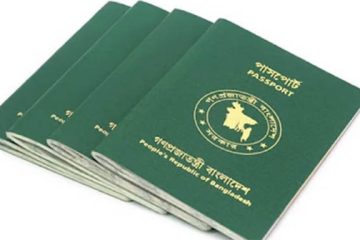Most Intense Manhunt
Detective work on courier led to Laden
After years of dead ends and promising leads gone cold, the big break came last August.
A trusted courier of Osama bin Laden, whom American spies had been hunting for years, was finally located in a compound 35 miles north of the Pakistani capital, close to one of the hubs of American counterterrorism operations. The property was so secure, so large, that American officials guessed it was built to hide someone far more important than a mere courier.
What followed was eight months of painstaking intelligence work, culminating in a helicopter assault by American military and intelligence operatives that ended in the death of bin Laden on Sunday and concluded one of history’s most extensive and frustrating manhunts.
For nearly a decade, American military and intelligence forces had chased the spectre of bin Laden through Pakistan and Afghanistan, once coming agonisingly close and losing him in a pitched battle at Tora Bora, in the mountains of eastern Afghanistan.
As Obama administration officials described it, the real breakthrough came when they finally figured out the name and location of bin Laden’s most trusted courier, whom the al-Qaeda chief appeared to rely on to maintain contacts with the outside world.
Detainees at the prison at Guantánamo Bay, Cuba, had given the courier’s pseudonym to American interrogators and said that the man was a protégé of Khalid Shaikh Mohammed, the confessed mastermind of the September 11 attacks.
American intelligence officials said Sunday night that they finally learned the courier’s real name four years ago, but that it took another two years for them to learn the general region where he operated.
Still, it was not until August when they tracked him to the compound in Abbottabad, a medium-sized city about an hour’s drive north of Islamabad, the capital.
CIA analysts spent the next several weeks examining satellite photos and intelligence reports to determine who might be living at the compound, and a senior administration official said that by September the CIA had determined there was a “strong possibility” that bin Laden himself was hiding there.
It was hardly the spartan cave in the mountains where many had envisioned bin Laden to be hiding. Rather, it was a mansion on the outskirts of the town’s centre, set on an imposing hilltop and ringed by 12-foot-high concrete walls topped with barbed wire.
The property was valued at $1 million, but it had neither a telephone nor an Internet connection. Its residents were so concerned about security that they burned their trash rather putting it on the street for collection like their neighbours.
American officials believed that the compound, built in 2005, was designed for the specific purpose of hiding bin Laden.
Months more of intelligence work would follow before American spies felt highly confident that it was indeed bin Laden and his family who were hiding in there — and before President Obama determined that the intelligence was solid enough to begin planning a mission to go after the Qaeda leader.
On March 14, Mr Obama held the first of what would be five national security meetings in the course of the next six weeks to go over plans for the operation.
The meetings, attended by only the president’s closest national security aides, took place as other White House officials scrambled to avert a possible government shutdown over the budget.
Four more similar meetings to discuss the plan would follow, until President Obama gathered his aides one final time last Friday.
At 8:20 that morning, Mr Obama met with Thomas Donilon, the national security adviser; John O. Brennan, the counterterrorism adviser; and other senior aides in the Diplomatic Room at the White House. The president was travelling to Alabama later that morning to witness the damage from last week’s tornadoes. But first he had to sign off on the final plan to send intelligence operatives into the compound where the administration believed that bin Laden was hiding.
Even after the president signed the formal orders authorising the raid, Mr Obama chose to keep Pakistan’s government in the dark about the operation.
“We shared our intelligence on this compound with no other country, including Pakistan,” a senior administration official said.
It is no surprise that the administration chose not to tell Pakistani officials. Even though the Pakistanis had insisted that bin Laden was not in their country, the United States never really believed it.
American diplomatic cables in recent years show constant American pressure on Pakistan to help find and kill bin Laden.
Asked about the Qaeda leader’s whereabouts during a Congressional visit to Islamabad in September 2009, the Pakistani interior minister, Rehman Malik, replied that he “’had no clue,” but added that he did not believe that bin Laden was in the area. Bin Laden had sent his family to Iran, so it made sense that he might have gone there himself, Mr Malik argued. Alternatively, he might be hiding in Saudi Arabia or Yemen, or perhaps he was already dead, he added, according to a cable from the American Embassy that is among the collection obtained by WikiLeaks.
The mutual suspicions have grown worse in recent months, particularly after Raymond Davis, a CIA officer, shot two men on a crowded street in Lahore in January.
On Sunday, the small team of American military and intelligence operatives poured out of helicopters for their attack on the heavily fortified compound.
When the shooting had stopped, bin Laden and three other men lay dead. One woman, whom an American official said had been used as a human shield by one of the Qaeda operatives, was also killed.
Courtesy of The New York Times/The Daily Star




















